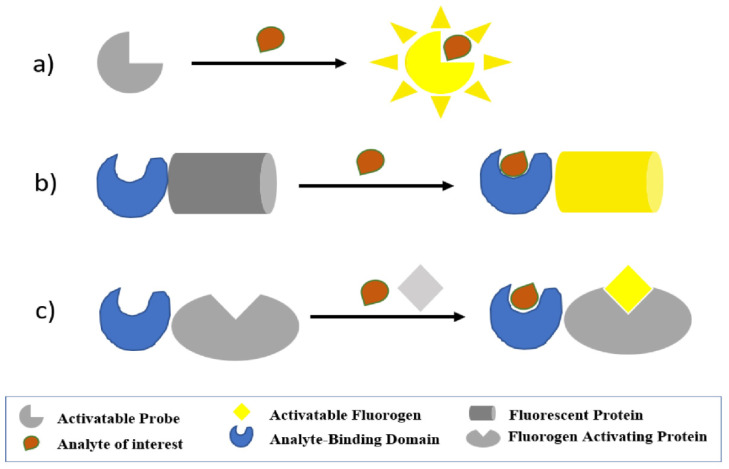Figure 5.
Principle of the main in vivo detection systems. (a) Turn on (activatable or smart) probes are exogenously added and they light on upon the binding of the analyte (hydrogen ions, ROS, calcium, ClO, etc.). (b) Genetically encoded sensors arise from the fusion of an analyte binding domain to a fluorescence protein; they are expressed in cells and they can change their fluorescence features when binding to ligand. (c) Chemical-genetic reporters consist of an analyte binding domain fused to a fluorogen-activating protein tag. These proteins are not fluorescence but they are able to activate a cognate fluorogen that in turn becomes fluorescent when exited. Sensors for ions and other molecules are designed in order to light on only when they bind the analyte.

